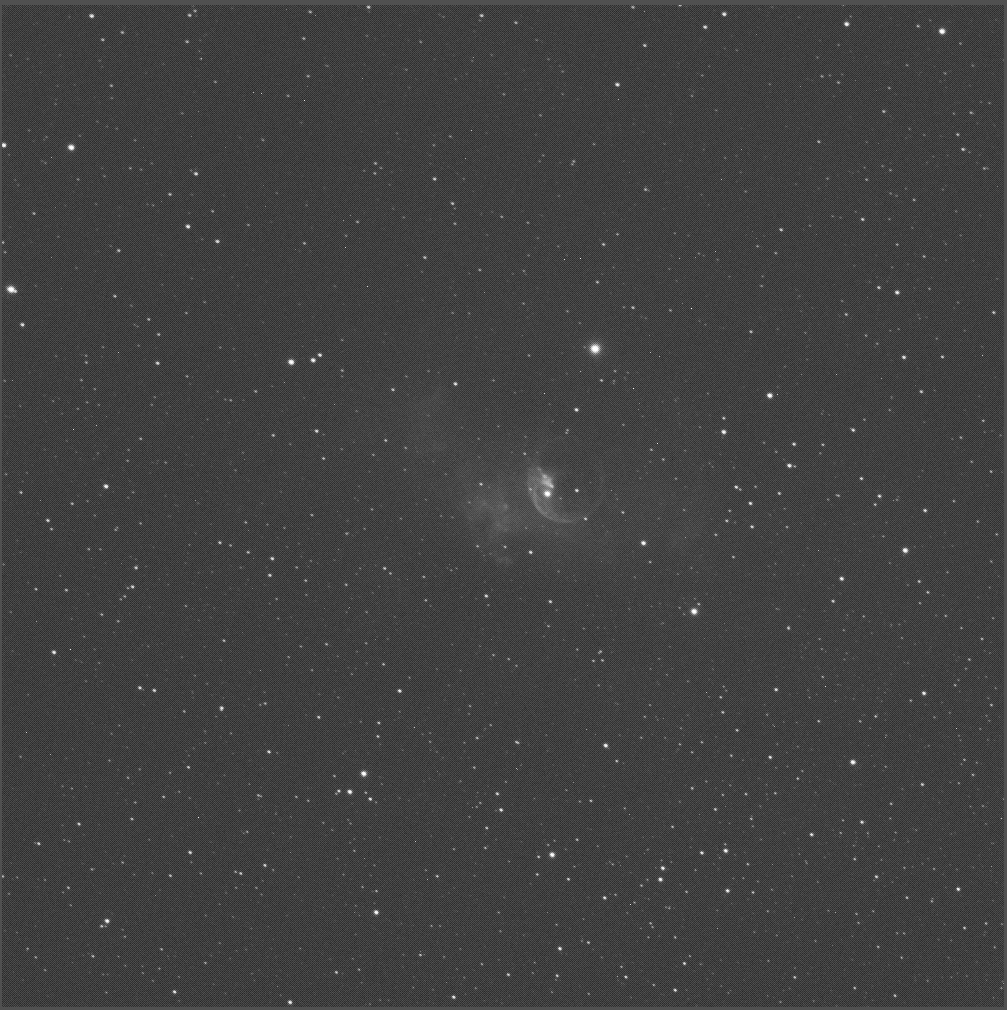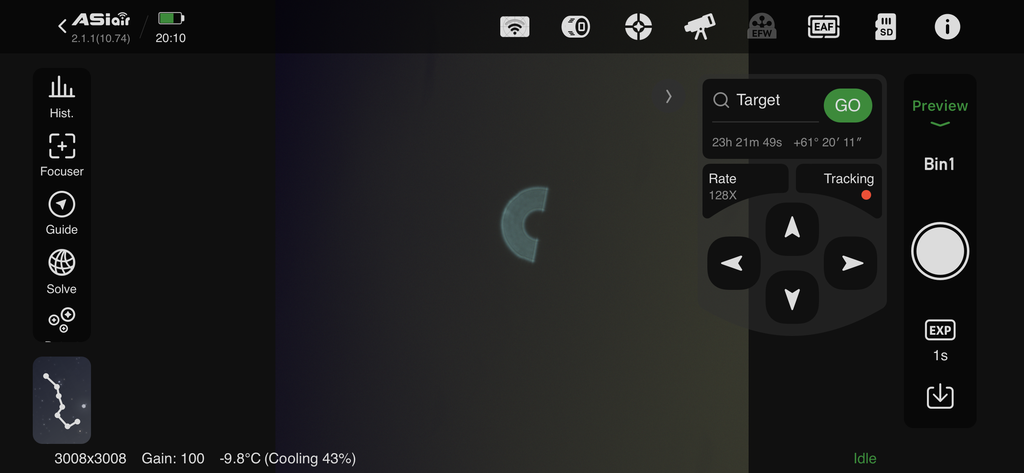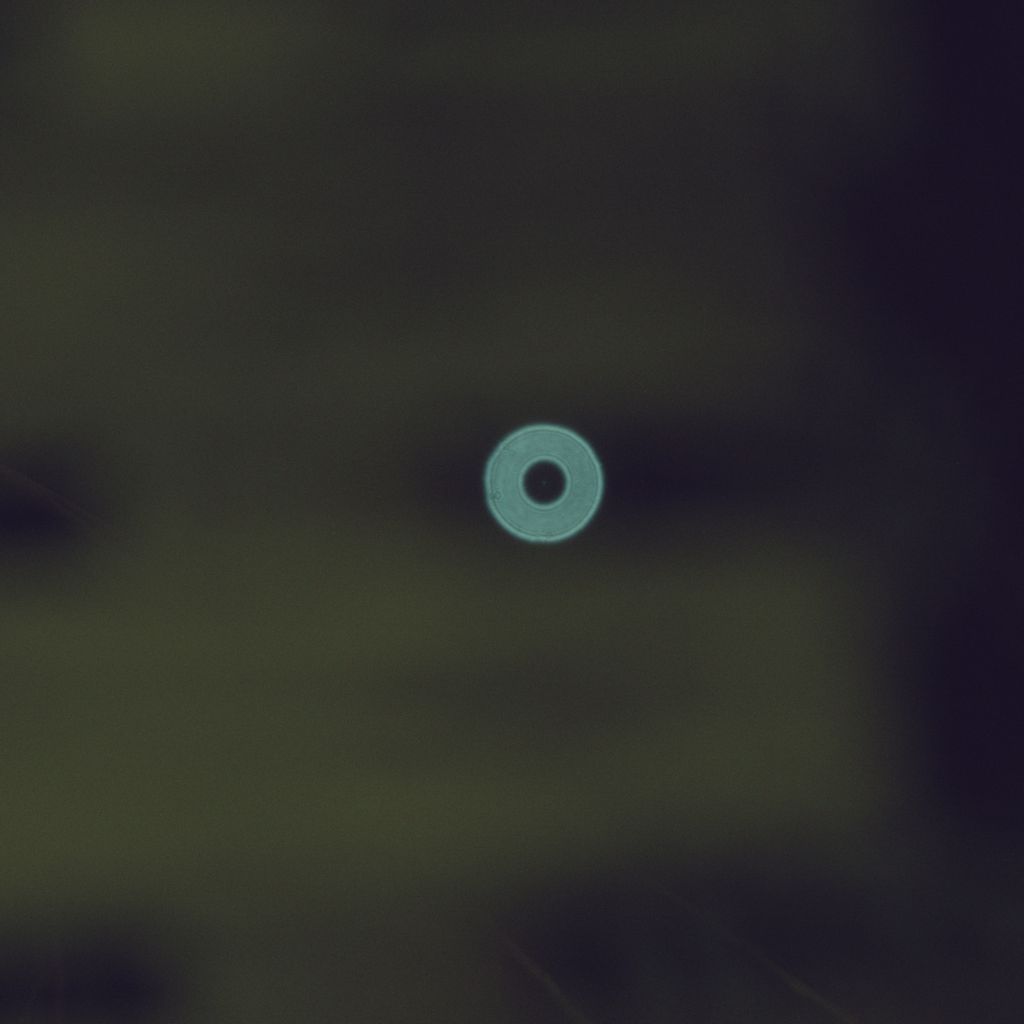Thanks for taking the time to help!
This is a really weird one, I just can't work it out. Everything in the scope seems to be as it should be. I collimated it last week using an Ocal Pro collimation camera and this was the view down the focuser tube:
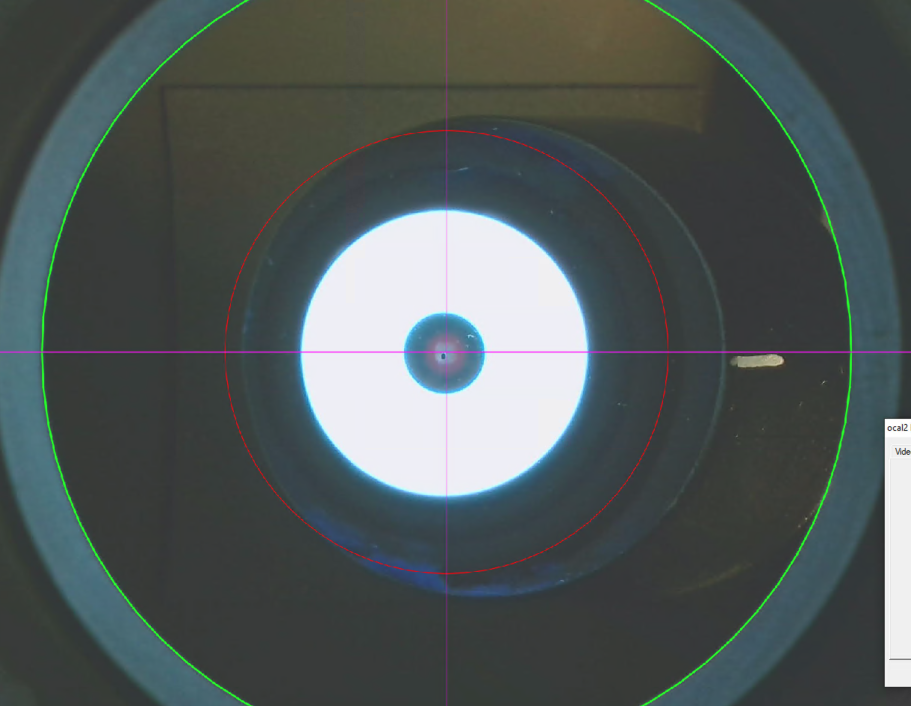
The red thing in the centre is the local with it's sensor on the crosshairs.
I also did a very quick star test using Deneb in poor seeing just after and got this:
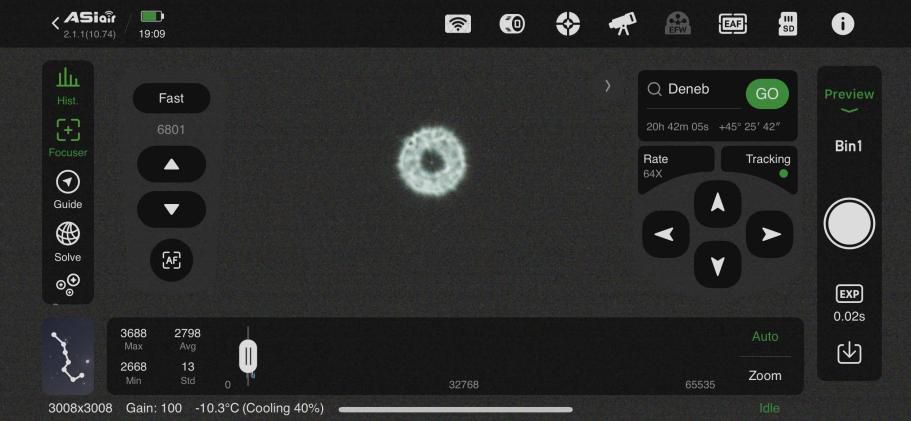
When I was trying to find my artificial start last night, the image of my back fence, shrubs, trees, etc looked normal and there was nothing being blocked out.
The "star" I was using was a quick and simple foil with a pin prick in it over the end of an LED torch DIY job. I was hoping to use an actual star but it was 100% cloudy. The star was placed about 30m away. the focal length is 1000mm so I'm over the 20m minimum. Or do you mean the focal length as in the aperture x focal length (f5.3 x 1000mm)? In that case, the star would need to be 106m away.
I've tried moving the torch and the scope in all directions and get exactly the same half donut.
Incidentally, here's a single auto-stretched sub from the other night (after collimation), which doesn't look as bad as my half-donut start test suggests:
